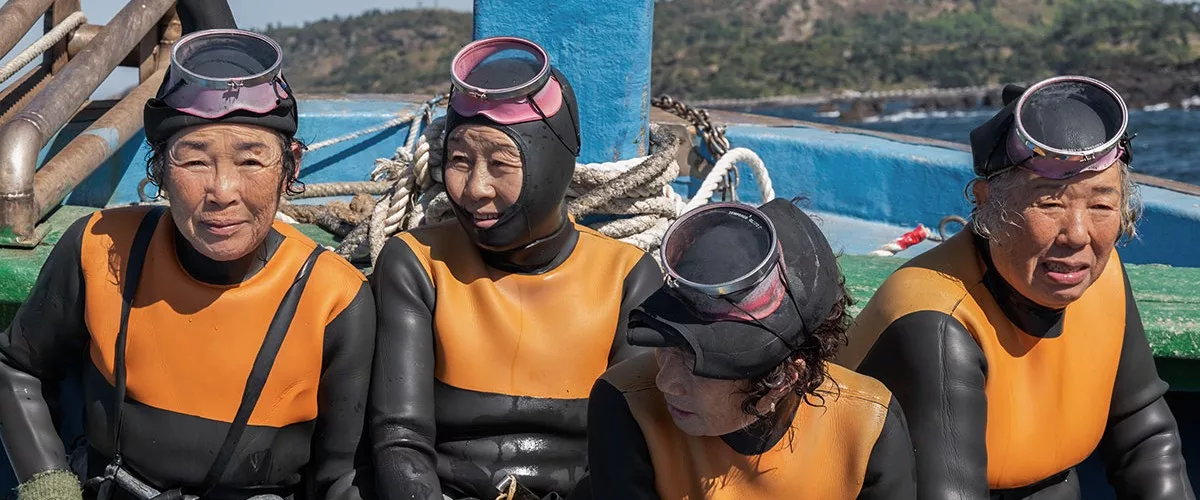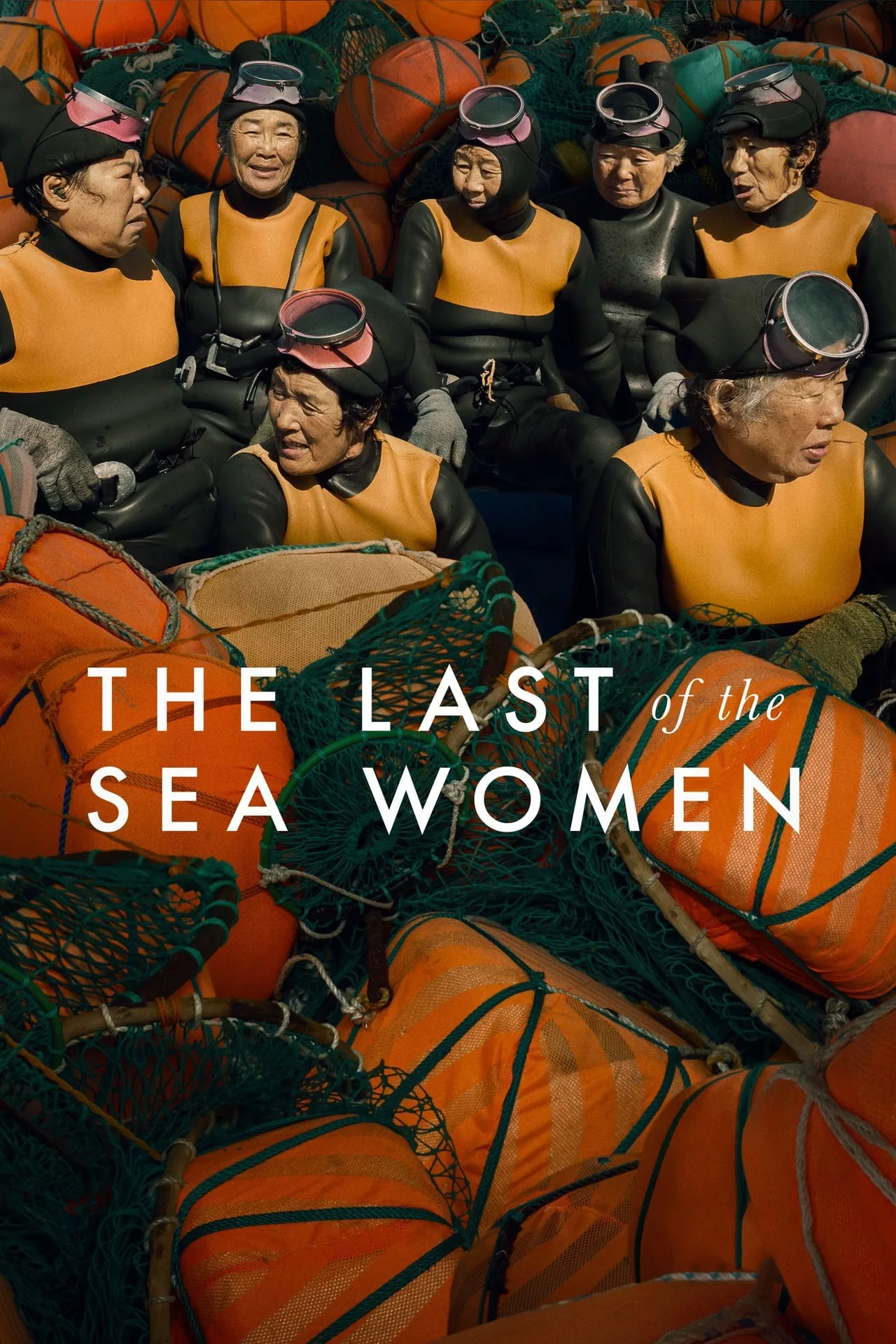Sue Kim's documentary "The Last of the Sea Women" begins with a single narrator, a woman who shares her story as she prepares to dive into the ocean to harvest seafood. As the camera pulls back, we see the ocean waves are actually filled with women in wetsuits. These women live on Jeju Island in South Korea, where they work as haenyeo, traditional fisherwomen who dive unaided by oxygen tanks, or as they say, "with their own breath."
Another narrator proclaims, "This is a job you pour your heart into. Passed down from our mothers and grandmothers. Even when it's cold or we don't feel like diving, we still dive. It's in our bones. We are women, after all." The women of this island have combed the sea for urchin and conch for centuries. Once as many as 30,000 women worked this traditional job. Only about 4,000 women continue to practice this form of fishing, even though UNESCO added ancestral art to its Intangible Cultural Heritage List in 2016. "It's like our culture is melting away," shares another woman.
Today, most haenyeo are in their sixties, seventies, and eighties. These grannies have done this job for decades. Early on, we meet several of these older women who have worked as haenyeo all their lives. To become one, they train for a decade, starting when they are as young as seven years old. Although it's now considered an important part of Korean heritage, it was once looked down upon. Many of the women share stories of being disrespected for this work. Despite this newfound cultural respect, only a handful of younger women continue to tend to the sea.
This includes thirty-somethings Sohee Jin and Jeongmin Woo, who document their work by posting videos on YouTube and TikTok. Like many of their older peers, they came to this work despite its difficult nature because it pays well and it brings them financial independence. Jin left a crushing corporate job, sharing that she feels "comforted and soothed by working in nature." Woo came to the work after her husband's company went bust, stating its one of few flexible jobs for a working mother in South Korea.
Aside from its breathtaking underwater cinematography, Kim's documentary is very plain in execution. At home and on the land, she uses simple camerawork to follow their everyday lives and a basic straight-to-camera interview style to capture their stories. However, this choice allows the poetic words of these women to remain the focus, and the power of their dedication to their calling and their passionate pleas for a better future to ring out as a clarion call for all of us.
The livelihoods of all these women are not just threatened by fewer young people joining their ranks. Truckloads of trash have begun to pollute the waters. The women must move further and further away from the shallow waters. Soon they will need to use oxygen tanks to do the work, which many fear will lead to overfishing. Jin and Woo also use their social media platforms to document these changes. To push the rest of the population to worry about their collective future, and the future of the planet around them. Despite all this, the documentary gives a glimmer of hope as the women share their humor and strength as a community and as keepers of this sacred tradition. That is until even more dire news threatens not only the haenyeo's way of life but possibly everyone on the island as well.
Jeju Island shares its sea borders with Japan, who have announced plans to release radioactive wastewater from the Fukushima nuclear meltdown into the ocean. Although the Japanese government is technically complying with international regulations, anti-nuclear activists and environmentalists are concerned that this project, which could last for 30 years, will have a devastating effect on sea life for hundreds, if not, thousands of years. Although the haenyeo band together to demonstrate for their rights and for the future of the sea, the film ends without a tidy resolution. Soon Deok Jang, one of the older women, presents their case in Switzerland before the Human Rights Council. She is brave and speaks her truth with a divine clarity of purpose. Yet, if anything has been made clear over the last few years, these highest courts of international law are not always a saving grace for the common man.
"Where there is sea, there will always be haenyeo," Jin asserts. Hopefully, then, there will always be the sea. These women have faith that this will be the case. It seems Kim also has faith, and ends her documentary with a moment of shared communal joy as the community celebrates the haenyeo at an annual festival. Me? I'm not so sure.
This review was filed from the Toronto International Film Festival. It opens on October 11th.




















